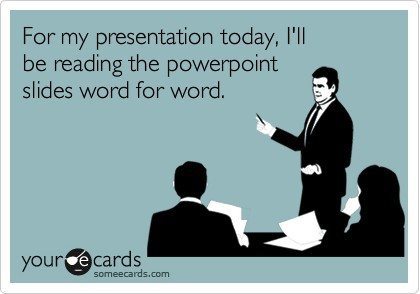I still remember the early days of managing a fully remote team. The energy of the office, the spontaneous brainstorms by the coffee machine, the easy camaraderie built over shared lunches, all of it was gone. It was replaced by a grid of faces on a screen. I quickly realized that the biggest challenge wasn’t about tracking productivity or managing projects; it was about building and maintaining the invisible, yet essential, foundation of any great team: trust.
In a virtual environment, trust doesn’t happen by accident. It can’t be absorbed through physical proximity. It has to be built intentionally, brick by brick, through every interaction. The absence of trust is the silent killer of virtual teams, leading to miscommunication, disengagement, and eventually, failure. As a leader, making the deliberate choice to cultivate trust is the single most important investment you can make in your team’s success.
The Foundation: Understanding the Two Pillars of Virtual Trust
Table of Contents
Before we dive into the “how,” it’s crucial to understand the “what.” Trust in a professional setting isn’t a single, monolithic concept. It’s built on two distinct pillars, and as leaders, we need to nurture both.
1. Cognitive Trust: This is the trust of the head. It’s our belief in a colleague’s reliability, skills, and competence. We have cognitive trust when we think, “I can count on her to deliver high quality work on time,” or “His expertise in this area is undeniable.” It’s built through consistency, accountability, and a proven track record of performance.
2. Affective Trust: This is the trust of the heart. It stems from a sense of personal connection, care, and empathy. We have affective trust when we feel, “He has my back,” or “She genuinely cares about my well being.” It’s the bond that transforms a group of individuals into a cohesive team, creating a space of psychological safety where people feel comfortable being vulnerable.
In an office, affective trust often develops organically. In a virtual setting, we have to build it with purpose. Here are seven proven strategies to help you build both pillars of trust with your team.
1. Champion Psychological Safety by Modeling Vulnerability
Psychological safety is the bedrock upon which all trust is built. It’s the shared belief that the team is safe for interpersonal risk taking. Team members feel safe to speak up, ask questions, challenge the status quo, and even fail without fear of humiliation or punishment.
As a leader, the most powerful way to foster this safety is to model vulnerability yourself. When you openly admit a mistake, say “I don’t know the answer to that,” or share a challenge you’re facing, you send a powerful message: it is okay to be human here. This isn’t about oversharing; it’s about being authentic. This behavior normalizes imperfection and encourages others to be open, which is the starting point for genuine connection and affective trust.
Also read: Building Psychological Safety
2. Establish Crystal Clear Communication Norms
In the absence of body language and non verbal cues, ambiguity is the enemy of virtual trust. Misunderstandings can fester and erode connection. To prevent this, you must proactively establish clear and explicit communication guidelines.
This means having an open conversation with your team to decide on your “rules of engagement.” Discuss things like:
- Which tool for which purpose? When should we use email versus a chat message versus a video call?
- What are our response time expectations? This helps prevent anxiety when a message isn’t answered immediately.
- What is our meeting etiquette? Are cameras expected to be on? How do we ensure everyone gets a chance to speak?
By co creating these norms, you remove guesswork and create a predictable, reliable environment where everyone understands how to interact effectively. This clarity is fundamental to building cognitive trust.
Also read: 10 Ways to Improve Communication in the Virtual World
3. Engineer Intentional Social Connection
You cannot leave personal connection to chance in a remote setting. The spontaneous “water cooler” moments need to be recreated with intention. While many teams default to the virtual happy hour, there are countless other ways to build affective trust.
Consider implementing a regular cadence of non work related interactions. You could start meetings with a simple, personal check in, create a dedicated chat channel for sharing hobbies and photos, or use fun virtual team building activities that allow personalities to shine. One of the most effective strategies I’ve used is setting up random “virtual coffee” pairings each week, giving team members 15 minutes to connect one on one about anything other than work. These small, consistent efforts build the relational tissue that holds a strong virtual team together.
4. Grant Radical Autonomy to Destroy Micromanagement
Nothing communicates a lack of trust more than micromanagement. When you constantly check in on tasks, question decisions, and dictate every step of a process, the message you are sending is, “I don’t trust you to do your job.”
The ultimate way to demonstrate cognitive trust is to grant your team members autonomy. Define the desired outcome, ensure they have the resources they need, and then step back and let them figure out the “how.” Focus your leadership on providing support and removing roadblocks, not on monitoring activity. When you empower your team with ownership, you not only show you trust their capabilities but also foster a culture of accountability and innovation.
Also read: Why Giving Autonomy to Employees Matters
5. Make Recognition and Feedback a Daily Ritual
In a virtual world, it’s easy for great work to go unnoticed. This can leave team members feeling invisible and undervalued, quickly eroding trust. To counteract this, make recognition a frequent and visible practice. Celebrate wins, both big and small, in public channels. Acknowledge effort, not just results.
Similarly, create a culture where constructive feedback is seen as a gift for growth. Providing regular, thoughtful feedback shows you are invested in your team members’ development. When people feel seen, valued, and supported, both their cognitive and affective trust in you as a leader will soar.
Also read: Giving Feedback
6. Build Trust from Day One: The Onboarding Imperative
The process of building trust begins the moment a new person joins your team. A clunky, impersonal, or disorganized virtual onboarding experience can create a trust deficit before they even start their first project.
Design an onboarding journey that is structured, welcoming, and deeply human. Ensure they have all the tools and access they need, but more importantly, focus on connection. Assign them an “onboarding buddy,” schedule introductory one on ones with every team member, and clearly communicate your team’s culture, values, and communication norms. A thoughtful onboarding process sends a clear message: “We are so glad you are here, and we are invested in your success.”
7. Navigate Conflict with Confidence
Many leaders fear conflict, especially in a virtual setting where it can be harder to read the room. However, avoiding disagreements does not build trust; it creates an environment of artificial harmony where important issues are left to simmer under the surface.
A high trust team is not one without conflict. It is one that knows how to disagree productively. As a leader, your role is to create a framework for healthy debate. Encourage different perspectives, focus discussions on the problem instead of the person, and help the team commit to a path forward even when there isn’t total consensus. When your team sees that disagreements can be navigated constructively and fairly, their trust in you and each other will deepen profoundly.
Also read: 100 Insightful Quotes on Conflict Management
How Do You Know It’s Working? A Pulse Check for Team Trust
Building trust is an ongoing process, not a one time event. It’s important to regularly assess where your team stands. You can do this by creating opportunities for open dialogue, but also by asking yourself some reflective questions:
- Do team members readily admit mistakes or ask for help?
- Are team members willing to engage in passionate, unfiltered debate around important topics?
- Do team members proactively offer feedback and assistance to one another?
- Do people give one another the benefit of the doubt before jumping to negative conclusions?
- Are team members genuinely excited to celebrate one another’s successes?
- Do I, as the leader, truly believe in the skills and intentions of my team?
A Final Thought: The Leader’s Takeaway
In the landscape of remote and hybrid work, trust is no longer just a “nice to have” soft skill; it is the ultimate performance multiplier. A team that trusts its leader and each other will innovate faster, solve problems more creatively, and navigate challenges with greater resilience. They are more engaged, more collaborative, and far less likely to leave.
Building this level of trust requires consistent, deliberate effort. It means choosing vulnerability over authority, clarity over ambiguity, and connection over control. It’s a journey that starts with you.
If you are looking to build a high trust, high performing team, explore how our tailored solutions can help you create a culture of connection and collaboration that drives real business results.









